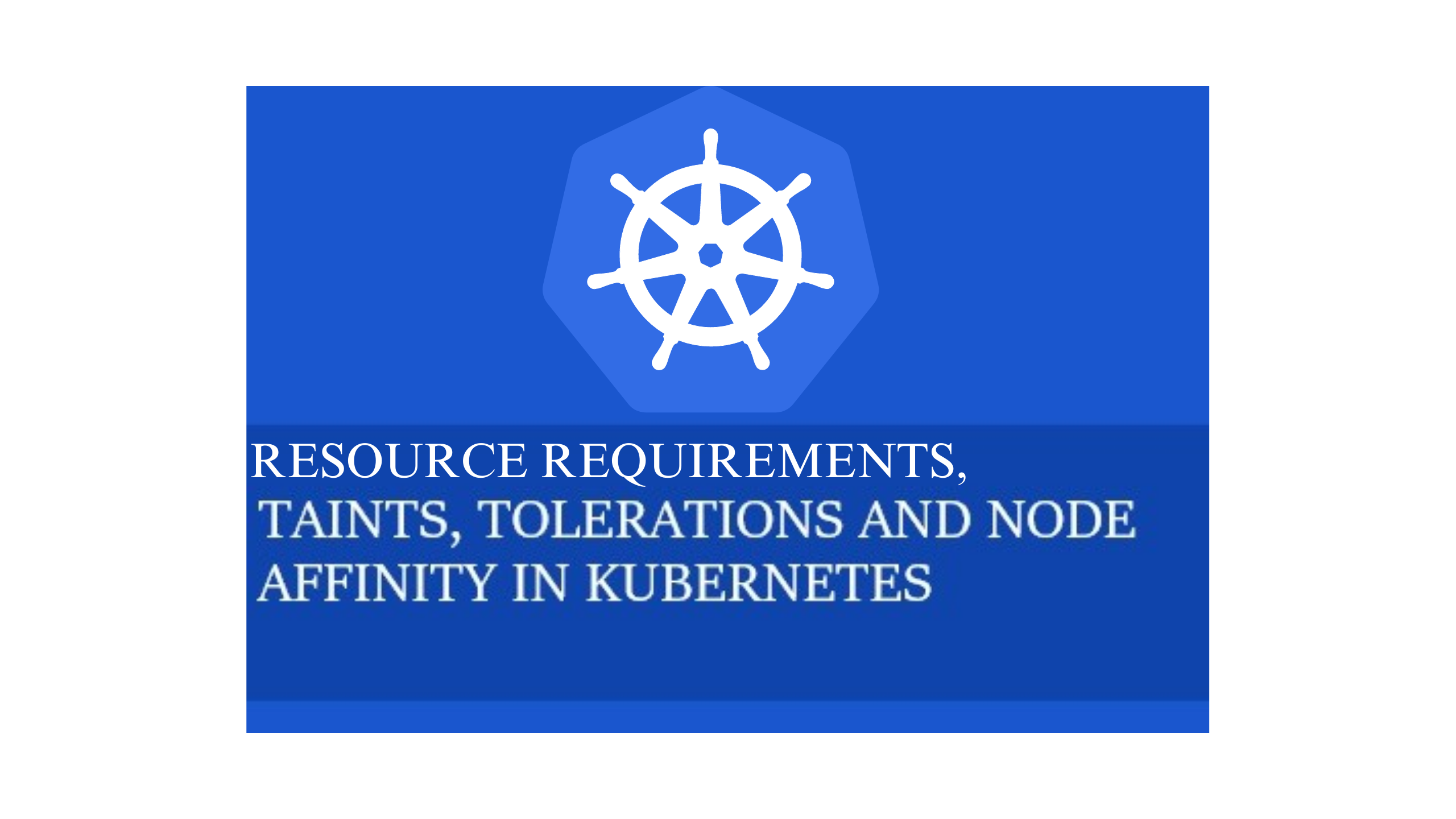Understanding Resource Requirements, Taints and Tolerations, and Node Affinity in Kubernetes
 Ashutosh Mahajan
Ashutosh Mahajan
🗼Introduction
Kubernetes has emerged as the de facto container orchestration platform, empowering developers to build scalable and resilient applications with ease. To harness its full potential, it's crucial to comprehend some advanced concepts like Resource Requirements, Taints and Tolerations, and Node Affinity. These features play a pivotal role in optimizing resource utilization, ensuring application stability, and maintaining the integrity of the Kubernetes cluster. In this blog, we will delve into each of these concepts and provide practical examples to illustrate their significance.
🗼Resource Requirements
Resource requirements enable Kubernetes to effectively allocate computing resources to pods. These resources include CPU and memory, which are vital for a containerized application's performance. By setting resource requests and limits, you can ensure that pods receive the necessary resources to operate efficiently, while also preventing resource contention and potential pod crashes due to resource exhaustion.
When a pod is created the containers are assigned a default CPU request of 0.5 and memory of 256Mi". For the POD to pick up those defaults you must first set those as default values for request and limit by creating a LimitRange in that namespace.
Example:
apiVersion: V1
kind: Pod
metadata:
name: default-mem-demo-2
spec:
containers:
- name: default-mem-demo-2-cti
image: nginx
resources:
requests:
cpu: "500m"
memory: "512Mi"
limits:
memory: "1Gi"
cpu: 1
In this example, the pod named "default-mem-demo-2" defines CPU and memory requirements. It requests 500 milli CPUs and 512 Megabytes of memory, with a maximum limit of 1 CPU core and 1 Gigabyte of memory.
🗼Taints and Tolerations
Taints and tolerations help regulate pod placement in a Kubernetes cluster. Taints are applied to nodes, indicating that they have specific constraints or limitations, such as reserving nodes for critical system components. Tolerations, on the other hand, are set at the pod level and allow pods to tolerate specific node taints, enabling them to be scheduled on tainted nodes.
Taints and tolerations are used to set restrictions on what pod to be scheduled on a Node. Trains are set on Nodes and toleration is set on pods
🎗️To taint a Node we use the following command:
kubectl taint nodes node-name key=value:taint-effect
🎗️There are three taint effect:
NoSchedule: Pods will not be scheduled on the Node.
PreferNoSchedule: The system will try to avoid placing a pod but it will not be guaranteed.
NoExecute: New Pods will not be scheduled on the node and existing pods will be ejected if they do not tolerate the taint.
🎗️ Example:
apiVersion:
kind: Pod
metadata:
name: my-app-pod
spec:
containers:
- name:
nginx-container
image: nginx
tolerations:
- key: "app"
operator: "Equal"
value: "blue"
effect: "NoSchedule"
In this example, the pod "my-app-pod" has a toleration for the taint with the key "app," value "blue" and effect "NoSchedule." This allows the pod to be scheduled on nodes with the specified taint, which otherwise would have been rejected.
🗼Node Affinity
The primary purpose of the Node Affinity feature is to ensure that the pods and hosted on particular nodes. Node affinity enables you to influence pod scheduling based on node labels. This feature is useful when you want to deploy specific pods on nodes that satisfy certain criteria, like having particular hardware or residing in specific geographic locations.
Let's assume you have nodes with labels "disktype=ssd" for nodes with which has disktype ssd and "disktype=hdd" for nodes that have disktype hdd. Below is an example of a pod definition with node affinity rules:
🎗️Example:
apiversion: vil
kind: Pod
metadata:
name: nginx
spec:
affinity:
nodeAffinity:
requiredDuringSchedulingIgnoredDuringExecution:
nodeSelectorTerms:
- matchExpressions:
- key: disktype
operator: In
values:
- ssd
containers:
- name: nginx
image: nginx
imagePullPolicy: IfNotPresent
In this example, the pod "nginx" has a node affinity rule, requiring it to be scheduled on nodes with the label "disktype=ssd" As a result, the pod will only run on nodes that have disktype ssd.
🗼Conclusion
In this blog, we explored three essential concepts in Kubernetes: Resource Requirements, Taints and Tolerations, and Node Affinity. By setting resource requests and limits, you can ensure efficient resource allocation for your pods. Taints and tolerations offer control over pod placement, especially for critical system components. Meanwhile, Node Affinity lets you direct pods to nodes that meet specific criteria, allowing for better resource utilization and optimized performance.
Mastering these features empowers Kubernetes administrators and developers to create resilient, optimized, and high-performing applications within their clusters. As you continue your journey in Kubernetes, understanding these concepts will undoubtedly prove invaluable in architecting a stable and scalable infrastructure for your containerized applications.
Subscribe to my newsletter
Read articles from Ashutosh Mahajan directly inside your inbox. Subscribe to the newsletter, and don't miss out.
Written by

Ashutosh Mahajan
Ashutosh Mahajan
Proficient in variety of DevOps technologies, including AWS, Linux, Shell Scripting, Python, Docker, Terraform, Jenkins and Computer Networking. They have strong ability to troubleshoot and resolve issues and are consistently motivated to expand their knowledge and skills through expantion of new technologies.